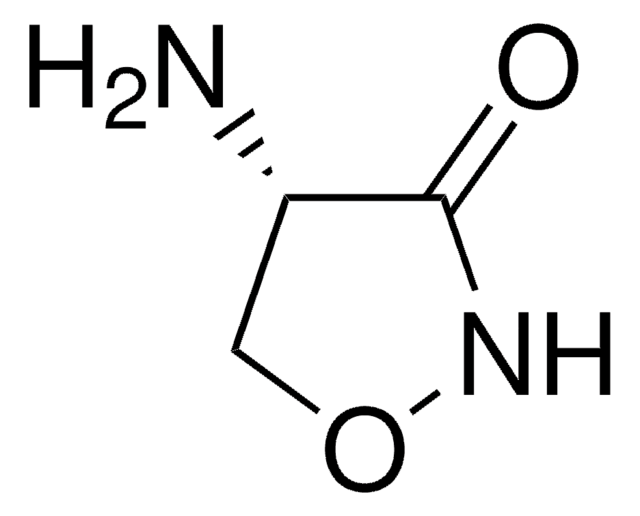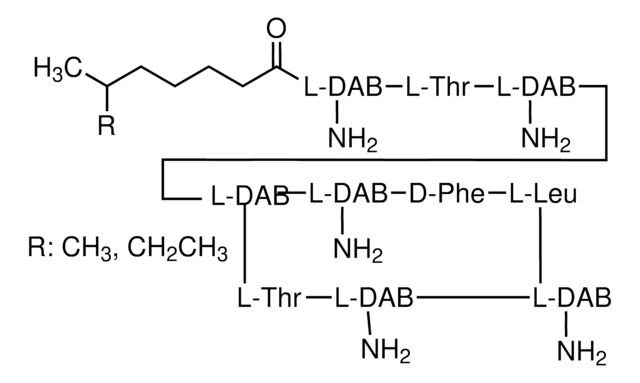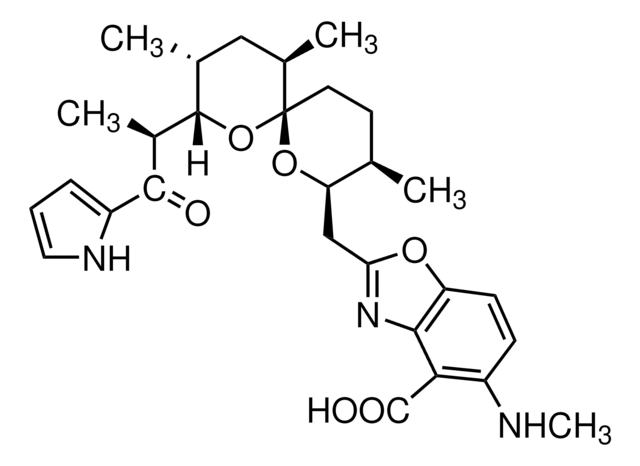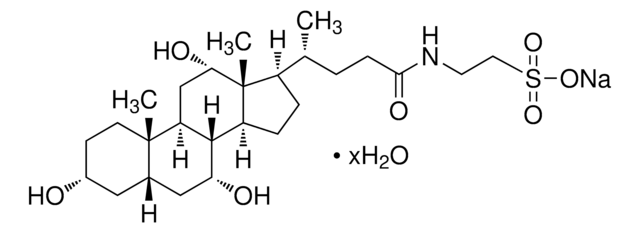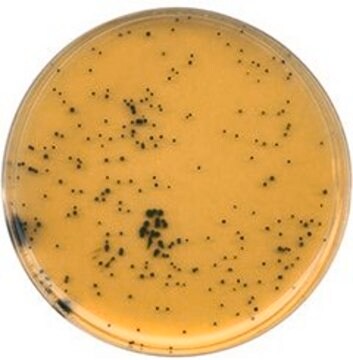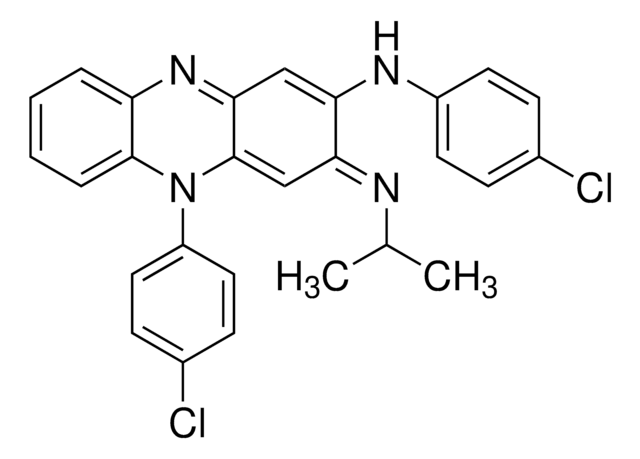Kluczowe dokumenty
C6880
D-Cycloserine
Synonim(y):
(R)-4-Amino-3-isoxazolidone, 4-Amino-3-isoxazolidinone
About This Item
Polecane produkty
Formularz
powder
Poziom jakości
mp
147 °C (dec.) (lit.)
spektrum działania antybiotyku
Gram-negative bacteria
mycobacteria
Tryb działania
cell wall synthesis | interferes
temp. przechowywania
−20°C
ciąg SMILES
N[C@@H]1CONC1=O
InChI
1S/C3H6N2O2/c4-2-1-7-5-3(2)6/h2H,1,4H2,(H,5,6)/t2-/m1/s1
Klucz InChI
DYDCUQKUCUHJBH-UWTATZPHSA-N
informacje o genach
human ... GRIN1(2902) , GRIN2A(2903) , GRIN2B(2904) , GRIN2C(2905) , GRIN2D(2906) , GRIN3A(116443) , GRIN3B(116444) , GRINA(2907)
mouse ... GRIN1(14810) , GRIN2A(14811) , GRIN2B(14812) , GRIN2C(14813) , GRIN2D(14814) , GRIN3A(242443) , GRIN3B(170483) , GRINA(66168)
rat ... GRIN1(24408) , GRIN2A(24409) , GRIN2B(24410) , GRIN2C(24411) , GRIN2D(24412) , GRIN3A(191573) , GRIN3B(170796) , GRINA(266668)
Szukasz podobnych produktów? Odwiedź Przewodnik dotyczący porównywania produktów
Opis ogólny
Zastosowanie
- to study its effect on partner preference in Prairie Voles
- to study its effect on grooming behaviour of rats
- to determine its minimum inhibitory concentration (MIC) on 48 multidrug resistant tuberculosis (MDR-TB) isolates using the broth microdilution method
- to study its effect on mouse model of autism, using behavioural assays
Działania biochem./fizjol.
Partial agonist at the glycine modulatory site of NMDA glutamatergic receptors; antibiotic against Gram-negative bacteria.
Mode of Resistance: D-Ala transport interference.
Kod klasy składowania
11 - Combustible Solids
Klasa zagrożenia wodnego (WGK)
WGK 2
Temperatura zapłonu (°F)
Not applicable
Temperatura zapłonu (°C)
Not applicable
Środki ochrony indywidualnej
Eyeshields, Gloves, type N95 (US)
Wybierz jedną z najnowszych wersji:
Masz już ten produkt?
Dokumenty związane z niedawno zakupionymi produktami zostały zamieszczone w Bibliotece dokumentów.
Klienci oglądali również te produkty
Nasz zespół naukowców ma doświadczenie we wszystkich obszarach badań, w tym w naukach przyrodniczych, materiałoznawstwie, syntezie chemicznej, chromatografii, analityce i wielu innych dziedzinach.
Skontaktuj się z zespołem ds. pomocy technicznej
